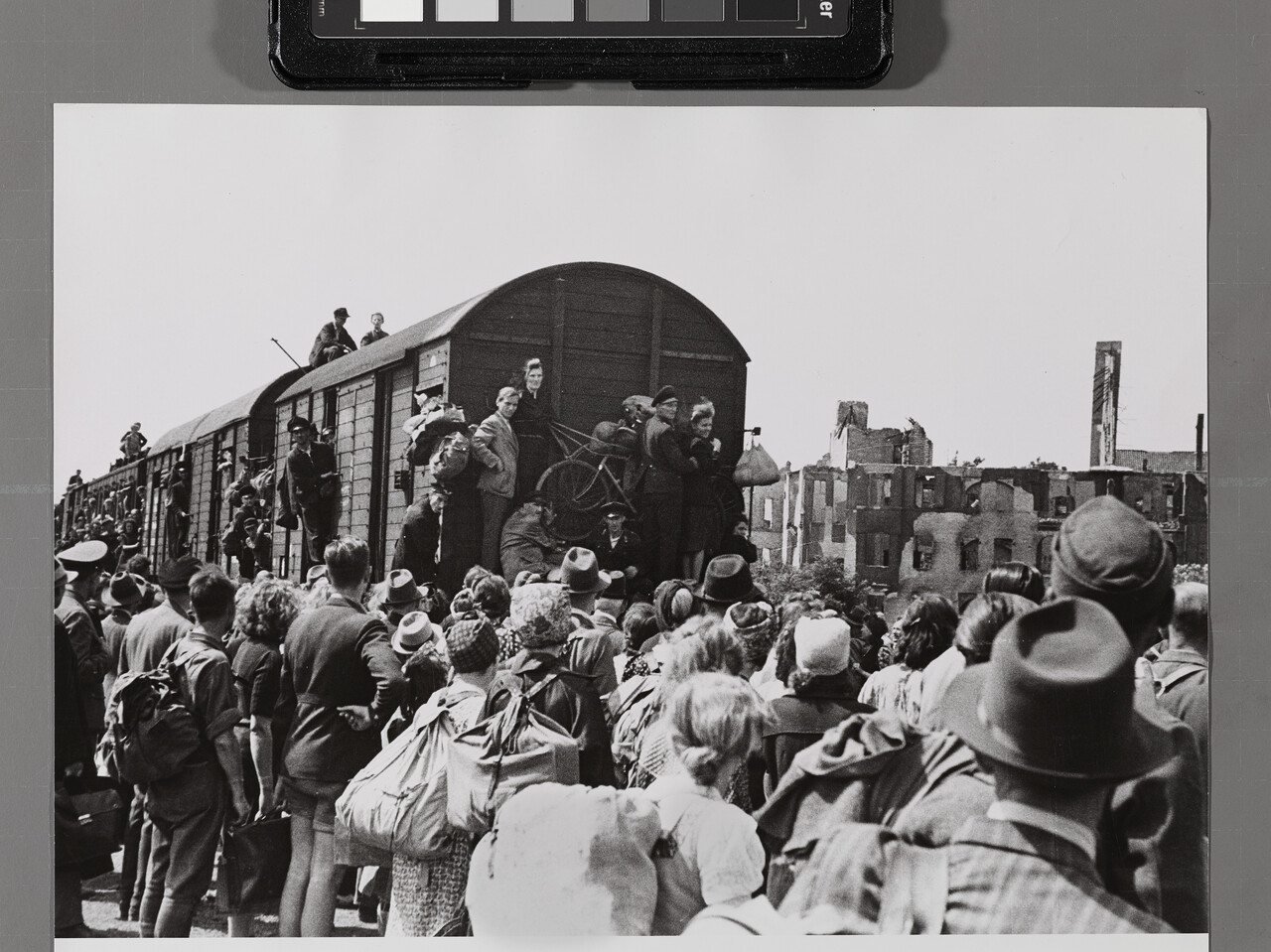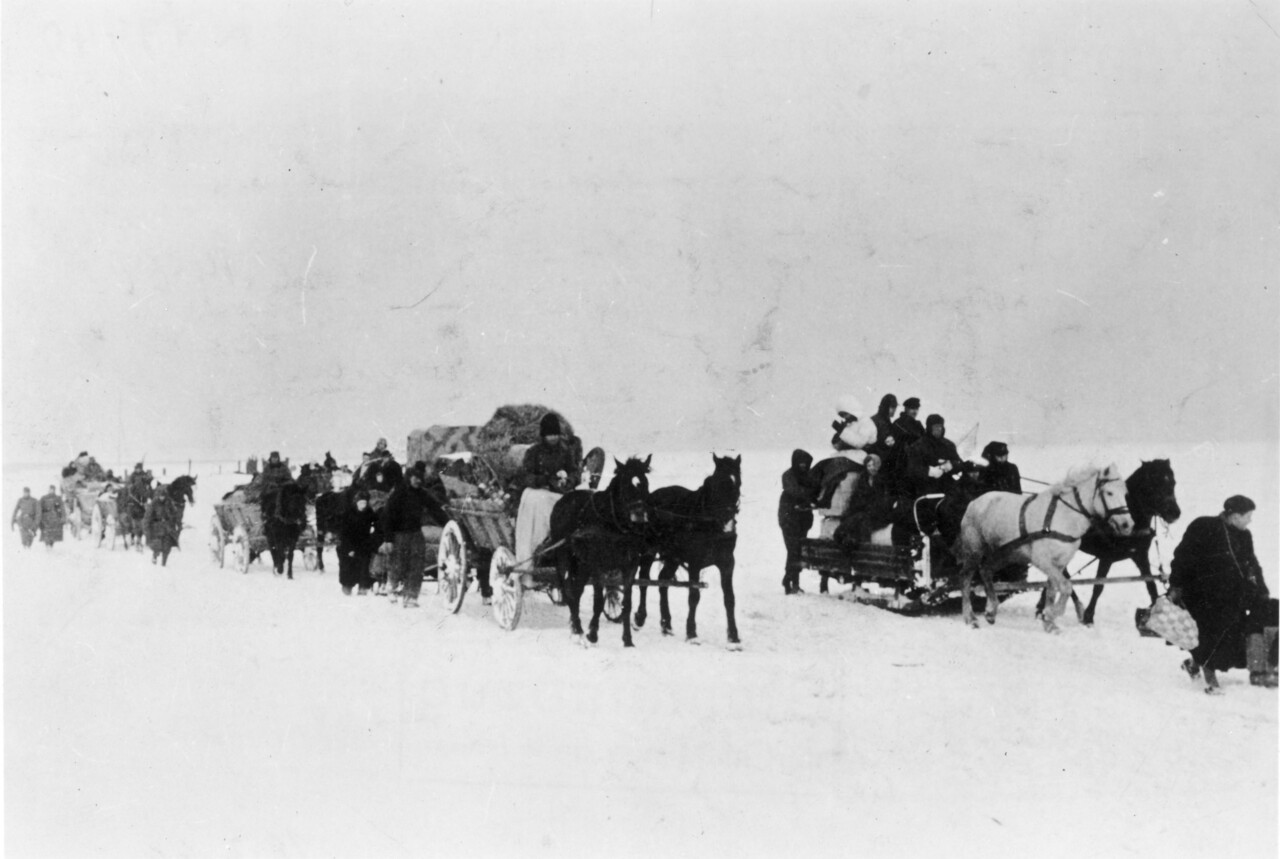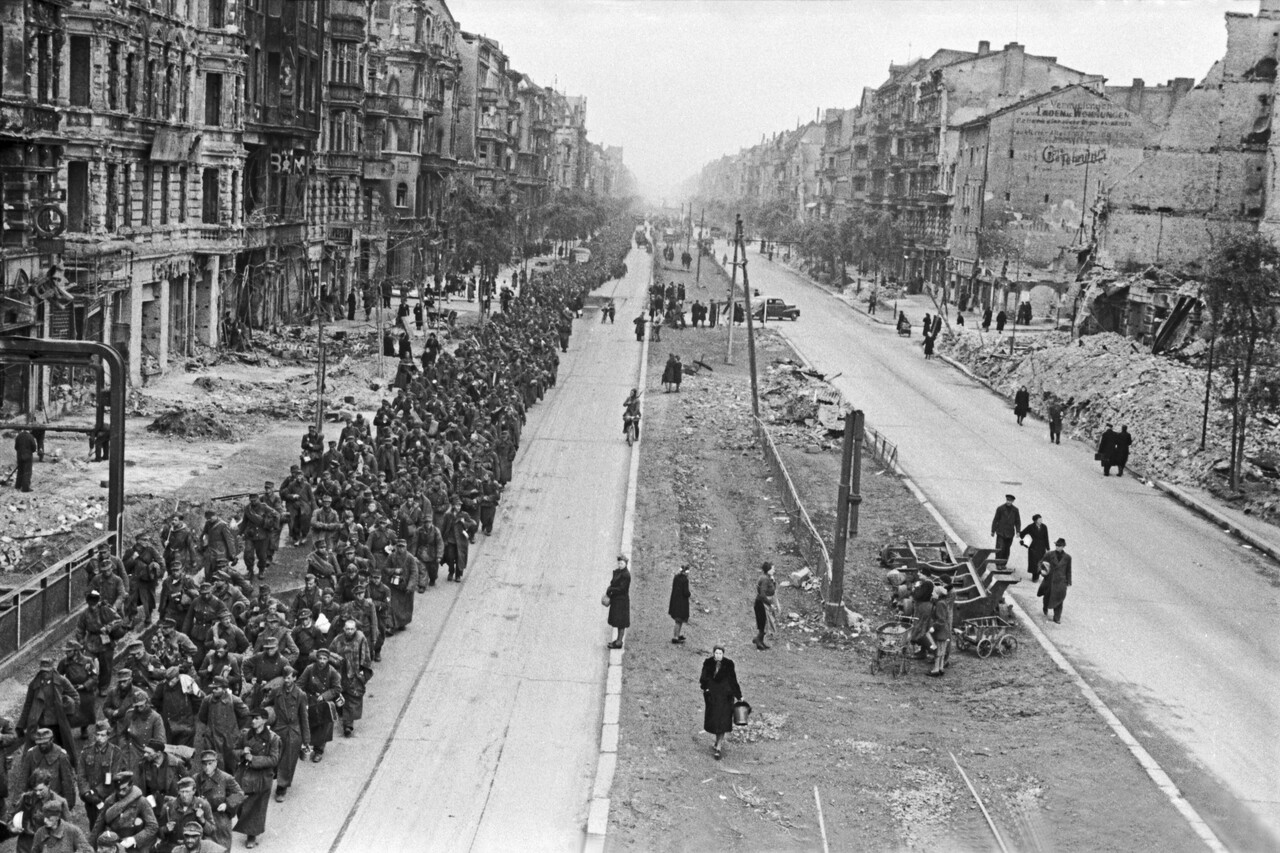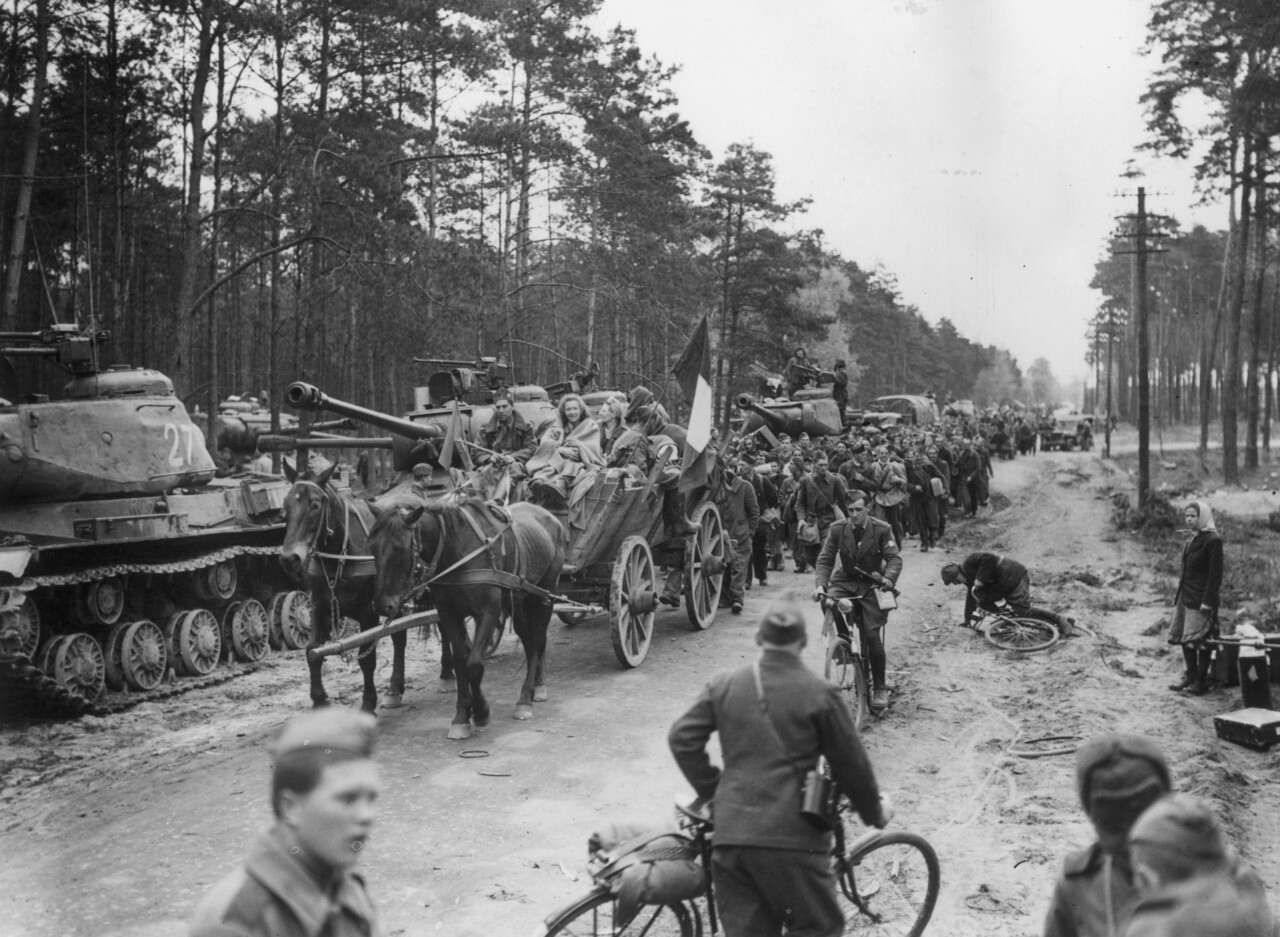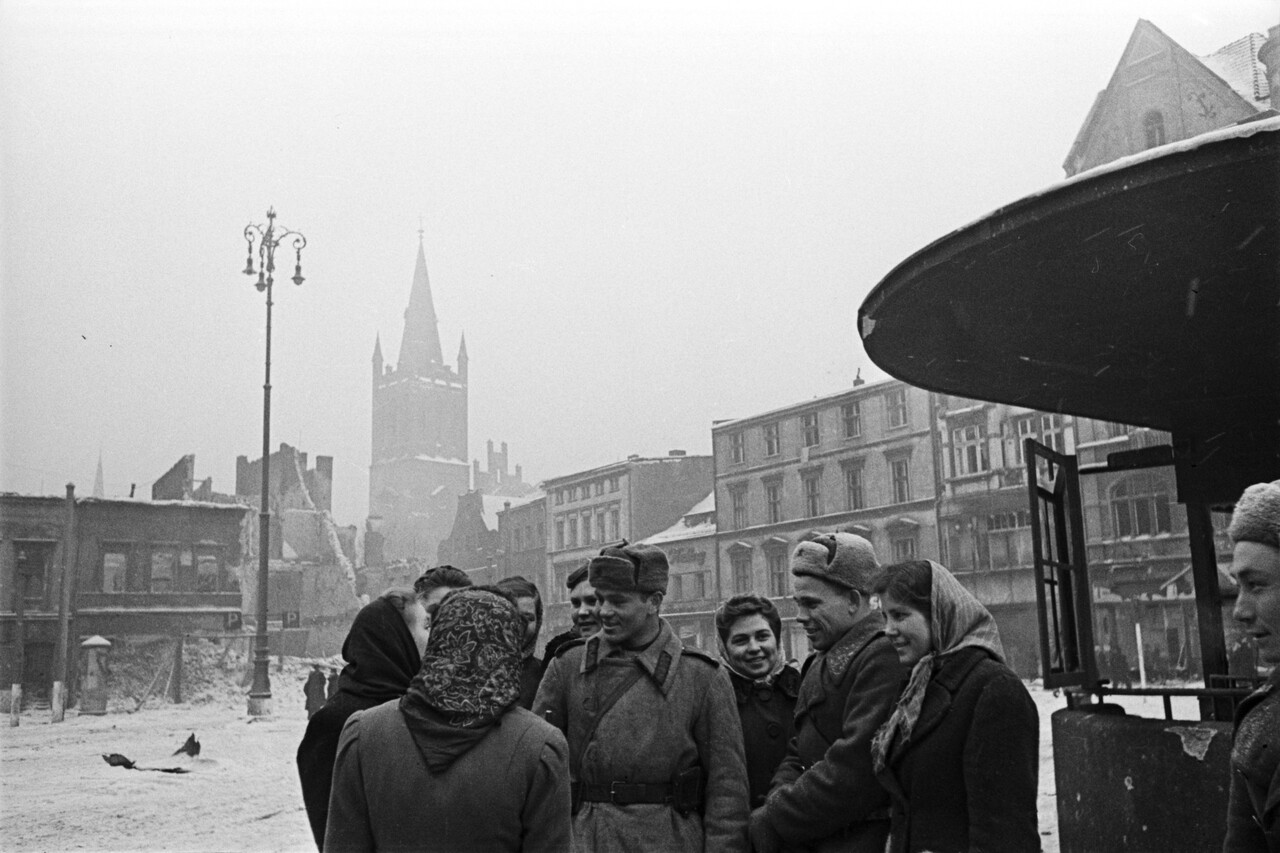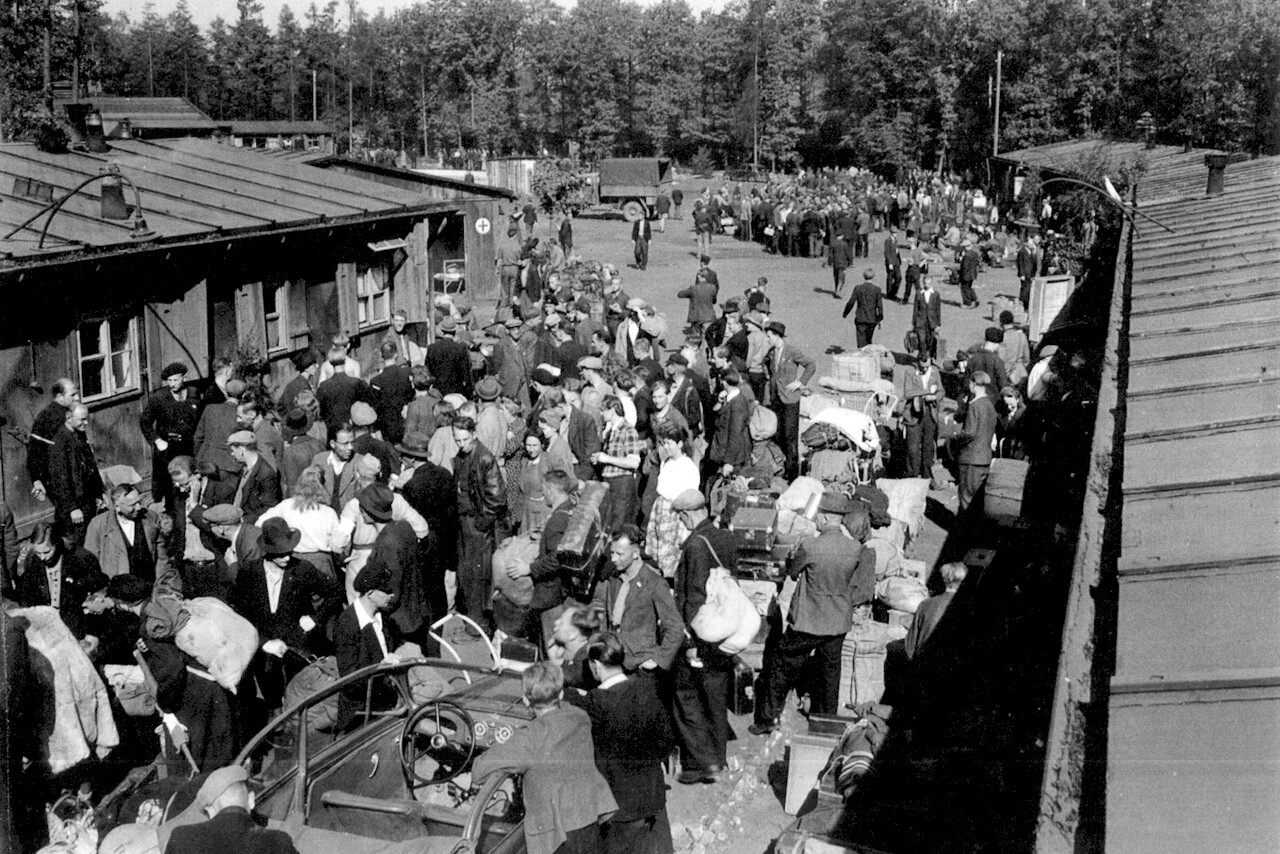Displaced
At the end of the war, millions of uprooted people were on the move across Europe: liberated concentration camp inmates and prisoners of war, forced labourers and Holocaust survivors, refugees and displaced persons or demobilised soldiers. As early as the winter of 1944/45, hundreds of thousands of Germans fled west to escape the Red Army. With the shifting of Poland's borders and the forced resettlement of Germans, almost 12 million people arrived in a destroyed Germany by 1946. Tens of thousands of Belarusians, Ukrainians and Lithuanians on Polish territory were deported to the Soviet Union or resettled within Poland. Well over 1.5 million Polish citizens were deported from the now Soviet eastern part of Poland, mainly to the former German eastern territories. Among them were over 100,000 Holocaust survivors. More than ten million »displaced persons« were held in camps in the three western occupation zones on German soil. Most of the Jews among them left Europe by 1950 as anti-Semitism was also an integral part of post-war societies. Several million »citizens of the Soviet Union« who had been captured by the Germans as soldiers or deported for forced labour returned home – sometimes under duress. They were often sent to labour camps on suspicion of having collaborated with the Germans.
East Prussia, winter 1944/45: A trek of German refugees heading west. Only the most necessary belongings can be transported on horse-drawn carts or as hand luggage. During the months-long flight, tens of thousands of people died of hunger, cold and disease or fall victim to attacks.
Bundesarchiv, Bild 183-R77440
Münster area (Westphalia), around 1946: Camp for »displaced persons« (DP). These so-called homeless foreigners often spend several years here trying to lead a »normal« life. Many start families. The number of newborns in DP camps between 1946 and 1948 is the highest in the world.
National Archives and Records Administration, Washington, D. C., 206275
